Maximize Your Sight: Non-Optical Low Vision Devices for Daily Life
For individuals living with vision loss, non-optical low-vision devices are fundamental tools that significantly enhance the ability to perform everyday tasks. These specialized adaptations—including lighting, reading stands, and absorptive sunglasses—do not magnify an image but instead work to maximize the effective use of your remaining vision. Prescribed as part of a comprehensive low vision examination, these non-optical aids function in powerful synergy with magnifiers and other optical devices to improve contrast, reduce glare, and support optimal posture.
What Defines Non-Optical Low Vision Devices?
Non-optical low vision devices are a collection of simple yet powerful tools that improve your visual access to the world around you. They are categorized by the way they adapt the environment or the task itself. Key examples include flexible-arm task lamps for illumination, reading stands for positioning, absorptive sunglasses for glare control, typoscopes for reading stability, and tactile locator dots for orientation.
Successful use of these prescribed devices relies on a combination of technical knowledge and personal commitment. Before a device can be fully effective and comfortable, you must proactively:
- Feel confident that your low vision specialist has appropriately prescribed the device for your unique visual condition.
- Be motivated to regularly incorporate the tool into your specific daily routines and tasks.
- Master the technique required to maximize the device’s function, understanding its potential benefits and its inherent limitations.
Flexible-Arm Task Lamps
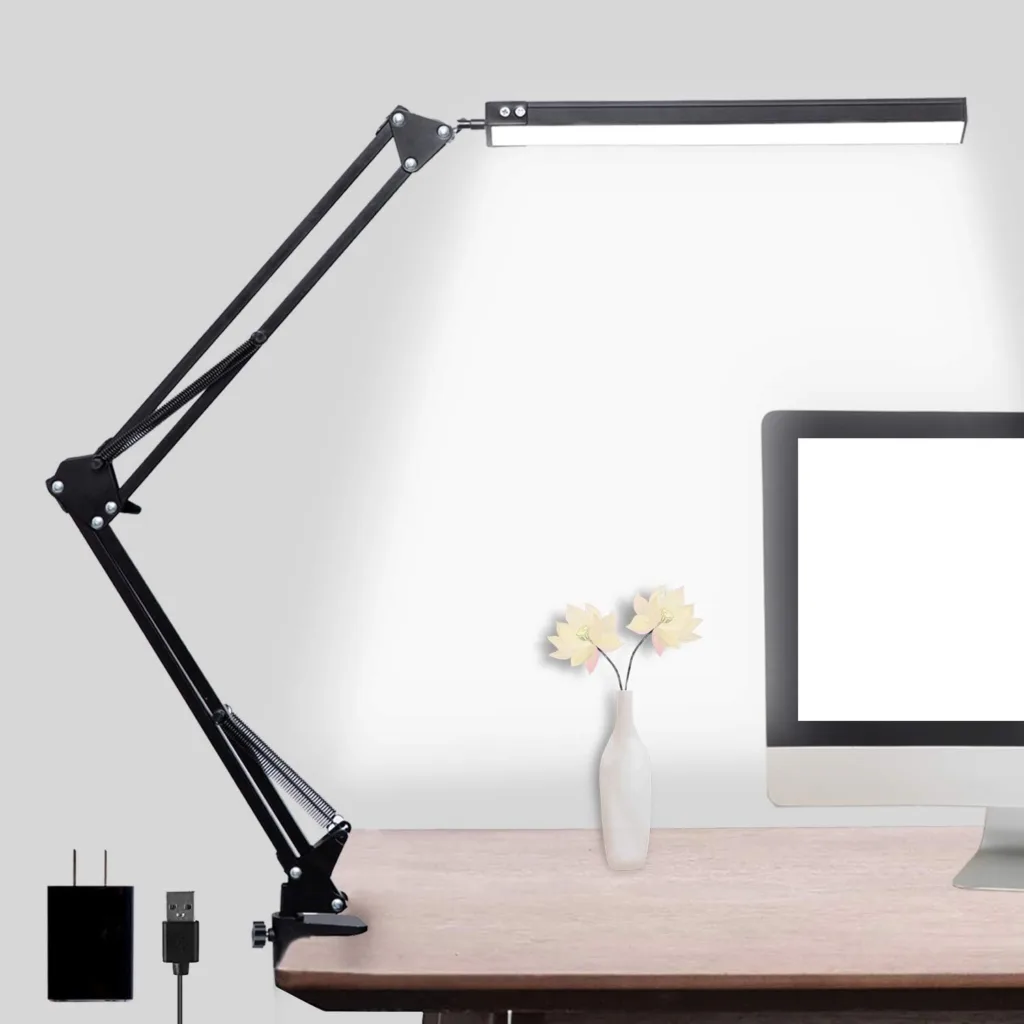 Flexible arm task lamps available from Amazon
Flexible arm task lamps available from Amazon
Proper, targeted lighting is critical for maximizing residual vision. The need for light increases with age; an individual age 65 or older may require 15 times as much light to read as a 10-year-old. More importantly, a person with low vision can often require three times the light of a sighted person of the same age simply to read comfortably.
Consequently, flexible-arm desk or floor task lamps are arguably the most essential non-optical devices for many. They direct intense light exactly where you need it.
Advantages of Task Lamps:
- Obtain them easily and affordably from various retailers, catalogs, or online sources.
- Adjust them precisely to accommodate different working surfaces, tasks, and seating arrangements.
Important Lighting and Safety Practices:
- Prevent Glare: Position the light source to focus on the task, ensuring it never shines directly into your eye, which can create uncomfortable glare.
- Position is Paramount: Bring the lamp as close as possible to the reading or writing task. This short distance is the most effective way to maximize the light delivered to the focal point, boosting clarity and contrast.
- Mind the Heat: Be mindful that some lamps, particularly older models, can become extremely hot. Use caution to avoid touching the bulb or shade.
- Choose the Right Bulb: Experiment with different lamp types, including incandescent, halogen, fluorescent, LED, and full-spectrum. For maximum eye comfort and protection, opt for a low “Kelvin” rating (under 5,000 K) to ensure the lamp does not emit excessive ultraviolet or blue light.
Reading Stands
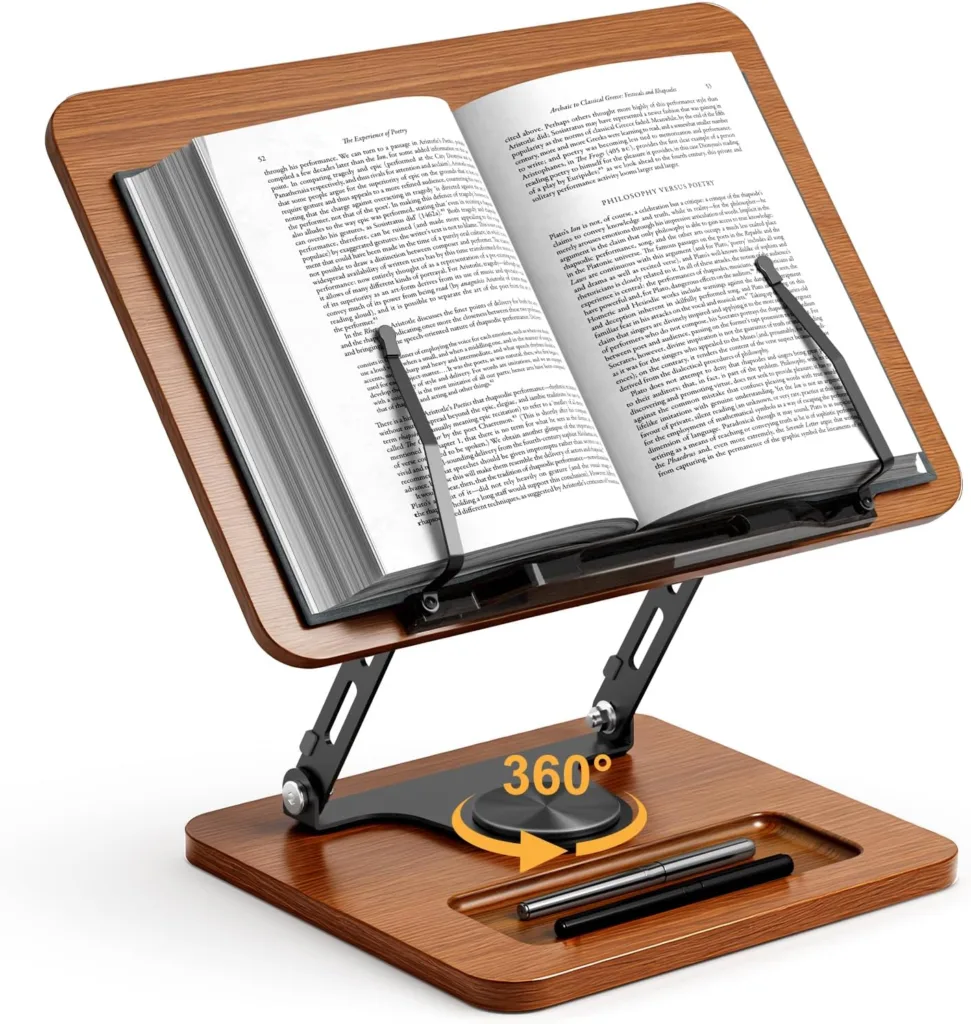 A Reading Stand available from Amazon
A Reading Stand available from Amazon
A good reading stand is indispensable for both reading and writing, as they position your materials to achieve optimal working conditions. When you use a reading stand alongside your flexible-arm lamp and any optical magnifier, you dramatically increase your reading success and stamina.
How Reading Stands Provide “Relative Distance Magnification”:
Reading stands help you achieve a concept known as relative distance magnification. They work by:
- Bringing material closer to your eye effectively enlarges the letters and words without requiring stronger magnification lenses.
- Expanding your field of view allows your eye to see more lines and text simultaneously, as the reading material sits closer to your natural focal point.
- Optimizing illumination by ensuring your head or body does not obstruct the light from the task lamp.
- Supporting ergonomics leads to reduced fatigue and strain on your neck and back by encouraging better, more comfortable posture.
Absorptive Sunglasses
 Absorptive Sunglasses available from eschenbach.com
Absorptive Sunglasses available from eschenbach.com
Glare is a significant and painful problem for many people with low vision. Absorptive sunglasses filter out this bothersome glare while protecting your eyes from harmful light rays.
While all good sunglasses block ultraviolet (UV) light, those with a yellow component are necessary to filter “blue” light, which is a concern for conditions like macular degeneration.
The Power of Color for Contrast:
- Block Blue Light: Lenses containing some yellow—specifically amber, orange, amber/orange combination, plum, and yellow—effectively filter blue light.
- Enhance Contrast: These same colored lenses significantly enhance or increase contrast, making objects and text “pop.” Grey and green-grey lenses, while useful for general light reduction, do not offer the same benefits of blue light filtration or contrast enhancement.
- Indoor Use: Yellow-colored sunglasses are exceptionally valuable for indoor use, as they reduce glare and boost contrast when reading, writing, working on handicrafts, or using a computer.
Key Advantages of Absorptive Sunglasses:
- Enhance visual clarity in sunlight and reduce eye fatigue.
- Protect Eyes from harmful light and potential physical injuries.
- Fit Over Glasses: They are readily available and can be fitted over your existing prescription glasses. Note that wrap-around or fit-over styles offer the best protection because they block light from the top and sides, unlike clip-on or insert styles.
A low vision examination is the best setting to try on a range of colors and styles to determine precisely which lens color works best for your specific eye condition.
Typoscopes and Locator Dots
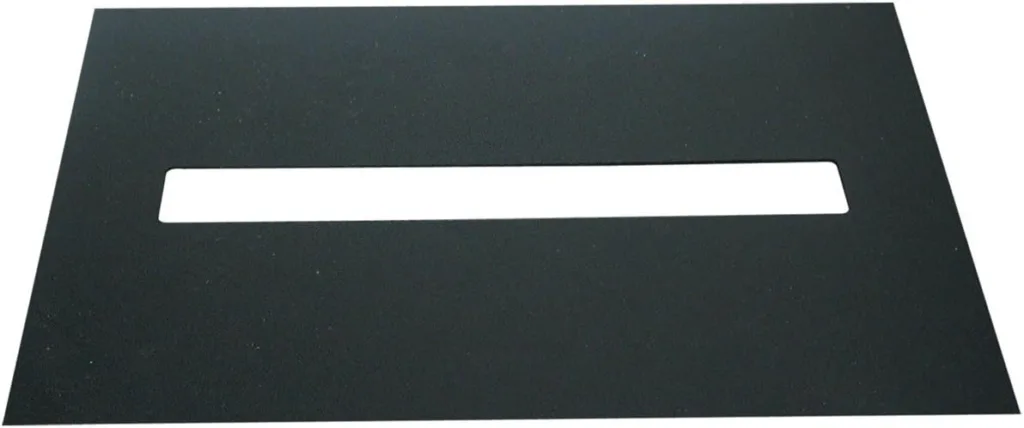 Typoscope
Typoscope
A typoscope is an inexpensive, durable piece of black plastic with a cutout opening. It is a highly effective, simple tool for improving reading tracking.
- Improve Tracking: It helps your eye follow along the reading line, maintain your place, and smoothly track back to the beginning of the next line.
- Enhance Contrast: The matte black surface provides excellent contrast against the page, drawing your attention directly to the printed line.
- Assist in Writing: Typoscopes double as an effective signature guide or writing guide, especially for individuals with longer names, by providing a defined space for writing. Other simple writing aids, like bold, black felt-tipped pens and dark-lined paper, also complement these non-optical strategies by providing maximum contrast for self-monitoring.
Tactile Locator or Bump Dots
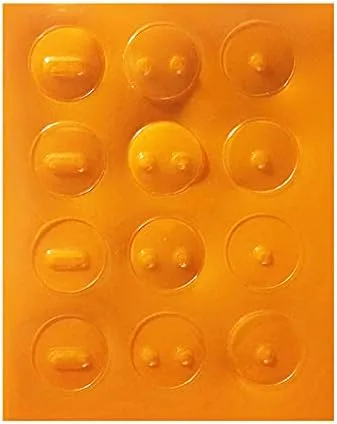 Orange Tactile Locator/Bump Dots
Orange Tactile Locator/Bump Dots
Locator or bump dots are highly visible and highly tactile raised foam or plastic dots, typically available in black, red, orange, and yellow. They feature an adhesive backing for quick and easy application.
- Mark Controls: They are used to mark appliances, dials, computers, and keyboards.
- Variety of Applications: Their different sizes and shapes (round or square) help you locate and identify specific settings on ovens, thermostats, microwaves, phones, and countless other devices, significantly improving safety and efficiency.
Colored Acetate Sheets
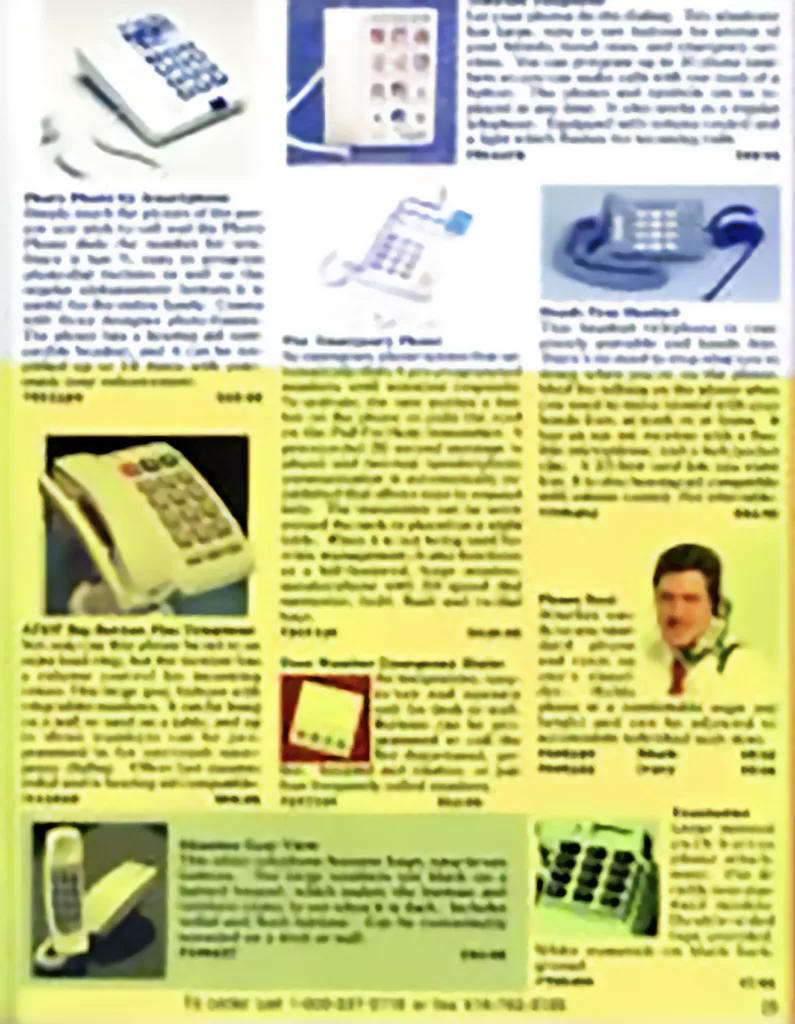 yellow acetate sheet
yellow acetate sheet
A simple yet effective tool, the translucent acetate sheet, especially when used in yellow, can dramatically enhance the contrast of printed material.
- Boost Contrast: When placed on a page, the sheet enhances the contrast between the print and the background, making words and letters appear darker and more readable. For example, a yellow sheet can significantly improve the readability of low-contrast newsprint.
- Reduce Page Glare: The sheet also helps reduce glare reflected off the page itself.
- Accessibility: Acetate sheets are inexpensive and readily available at stationery and office supply stores.
Tips for Successfully Using Low Vision Devices
Your home environment and reading conditions differ significantly from those in a specialized low-vision clinic, which often requires an adjustment period. It is common for users to feel the device they were prescribed is “wrong initially.” Successful device use involves time, patience, practice, and a strong support system.
- Be Patient with Yourself: Like any new skill, learning to read or perform tasks with a low-vision device requires consistent practice over many weeks. Remain patient and persistent.
- Adjust to the New Distance: You will have to hold reading material much closer to your eyes than you are used to. While this may feel uncomfortable at first, rest assured that reading at a very close distance will not harm your eyes or exacerbate your underlying vision problem.
- Lean on Your Support System: Family and friends play a crucial role. Encourage them to be patient and help you experiment with different lighting arrangements to ensure you are using the device correctly, as instructed by your low vision specialist.
Empowering Your Independence
Non-optical devices are not merely accessories; they are fundamental tools that empower you to regain and maintain independence in everyday life. By successfully integrating devices like proper lighting, reading stands, and high-contrast aids into your routine, you can maximize the effectiveness of your residual vision.
These aids work in concert with any prescribed optical devices to reduce frustration, increase reading stamina, and enhance safety and confidence. Remember that patience and practice are key to mastering any new tool. Take the time to experiment, adjust, and learn how each device works best for your unique visual needs.
Learn More